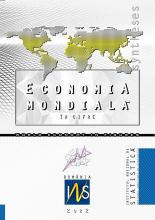Submitted by INS on 04/05/2022 - 10:20

Publication category:
Synthesis publications
The publication presents annual economic and social indicators necessary for drawing up studies and analyses on Romania’s place within the world economy. The paper provides comparative data on the economic and social development of Romania and of other countries in Europe and in the world, while the most significant indicators are distinctly presented for the European Union Member States (EU-28), as well as for candidate and potentially candidate countries to the European Union.
Postponed:
04/05/2022
 National Institute of Statistics
National Institute of Statistics 









